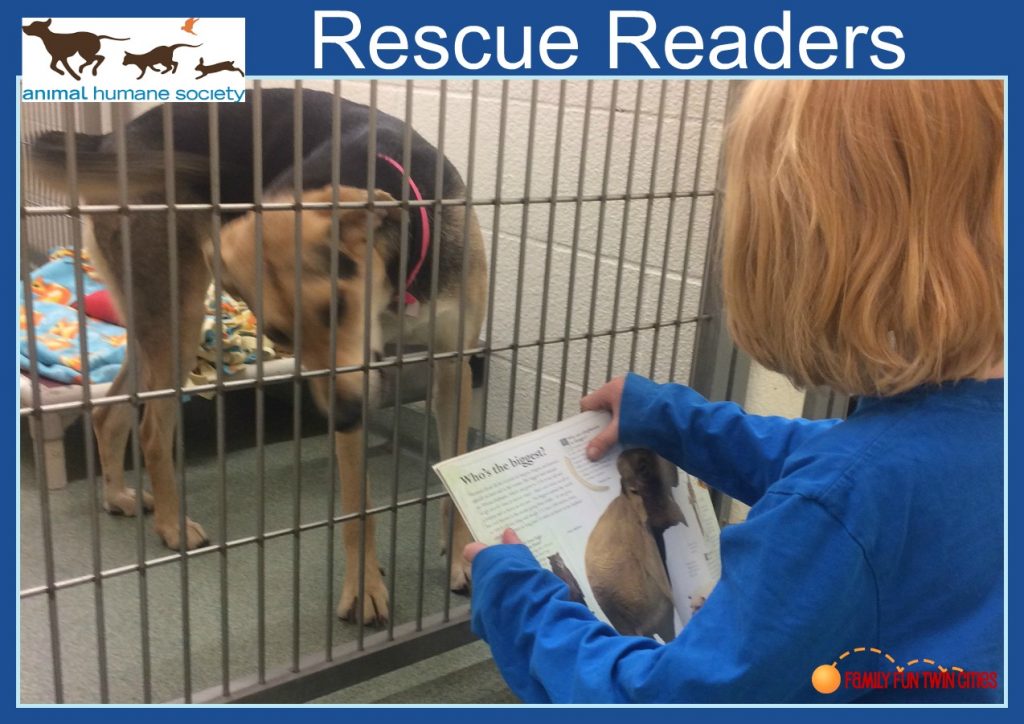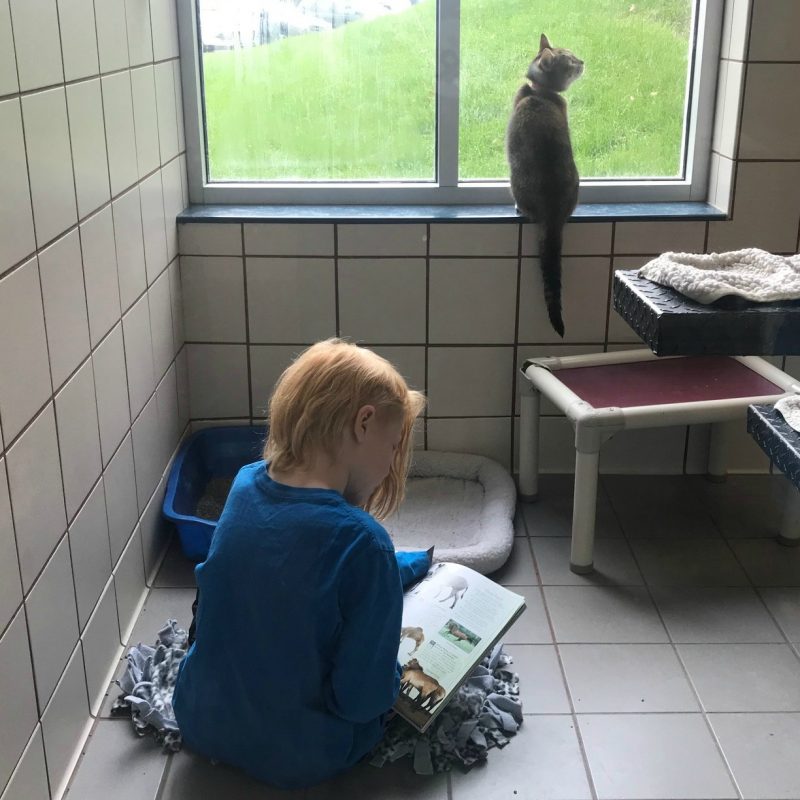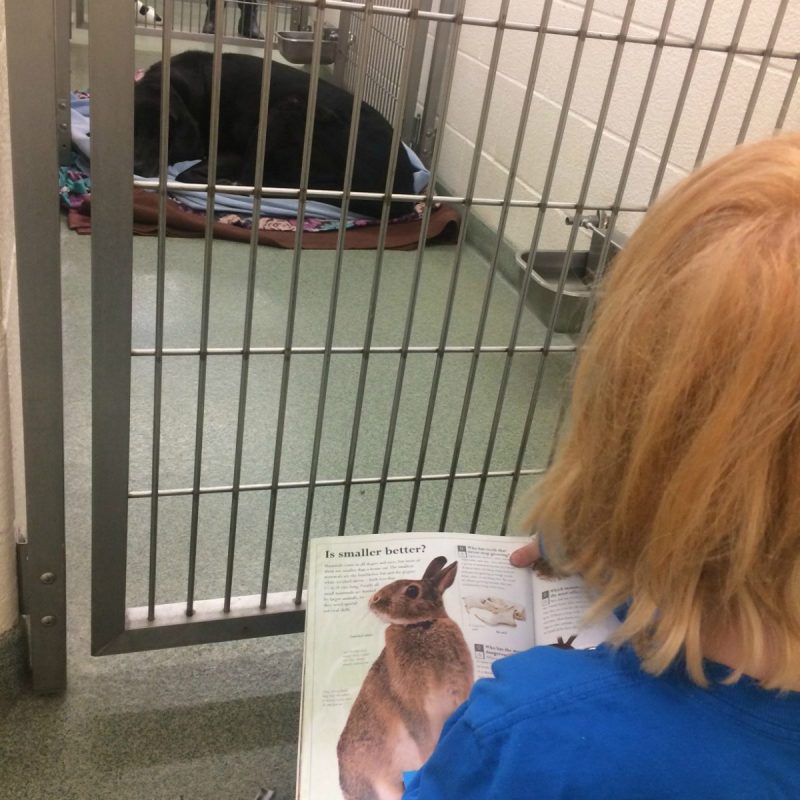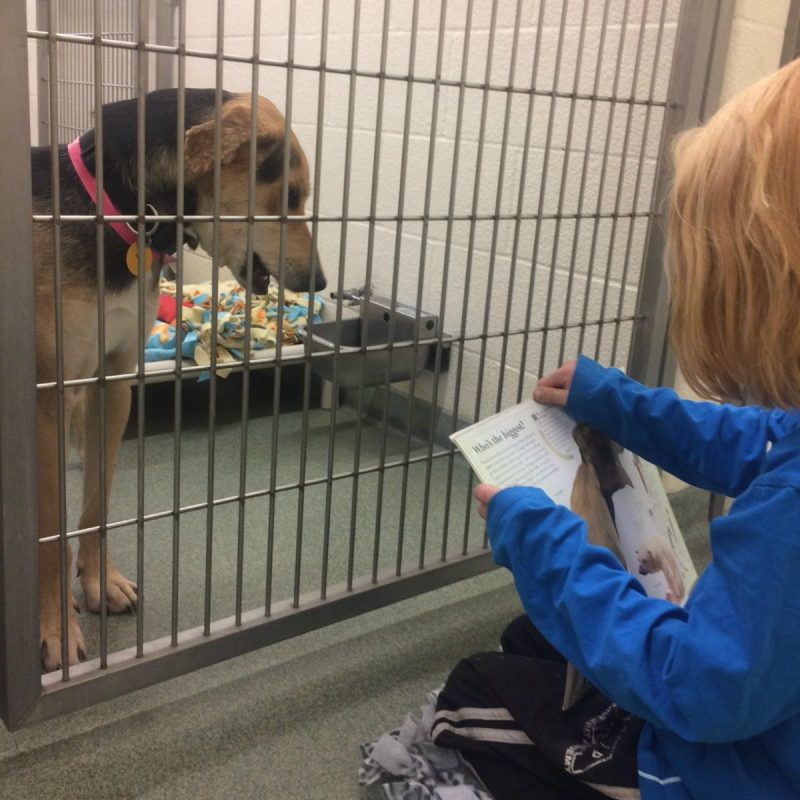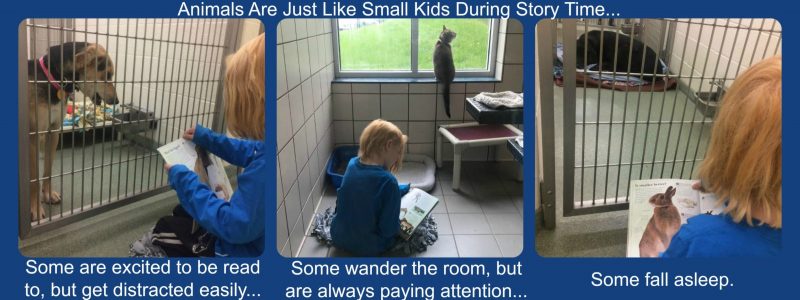We recently had an opportunity to visit the Animal Humane Society to attend a Rescue Readers orientation. This twist on reading therapy animal programs that many libraries offer, trains kids to provide the reading therapy to rescue pets.
What to Expect From Rescue Readers
The main difference I found between Rescue Readers and other programs where children read to animals is the focus is moved away from the child and put on the animal (usually a dog or cat). While both programs have children reading to pets, rather than bringing in trained animals to sit and listen to children, this program trains the children to read to animals who could use a little quiet companionship. Before becoming a certified Rescue Readers, the children and a parent attend a training program where they learn to read signals from dogs and cats to determine whether they would benefit from reading time. Once certified, children can sign up for one-hour reading sessions. After they choose the animal the want to read to, Rescue Readers sit for anywhere from 10 minutes to the entire one-hour sessions reading to that animal. After ten minutes if they want to move on, they can choose another animal.
During the initial training, kids and their parent learned about how to identify animal moods by their body language, a little about how Rescue Readers benefits both kids and animals, and then went on a tour of the facilities. The Humane Society houses dogs, cats and other companion animals, including birds, rabbits and other small animals. Rescue Readers was created for dogs and cats, but children are free to read to the other animals as well. After the training, kids had a chance to spend half an hour practicing their new reading skills with pets on the floor.
Upon completion of the training program, kids receive a certificate and can sign up for future reading times. Rescue Readers is offered at all four locations – Coon Rapids, Golden Valley, St. Paul and Woodbury. Once certified, kids can attend at any location, not just the location of their training.
How Rescue Readers Helps Kids and Animals
This program could offer several benefits to your child as well as the animals she chooses to read to during her visits.
Researches have found that children who read to animals have better attitudes toward reading. The idea of reading therapy animals is to provide children with a non-judgmental listener while they practice reading out loud, which should, in turn, encourage them to read more often, strengthening their reading skills. Right now, this theory is more anecdotal than scientific. None of the studies that I found were very large (less than 20 children in each study) and they were all conducted for too short of time periods to show a correlation in improved lifelong reading skills. However, they did seem to show that children who read to animals looked forward to that time more than control groups who didn’t have a reading companion animal. In fact, one of the studies had about a third of the control group drop out before the study was over while the test group finished intact.
As much fun as it is for the kids, Rescue Readers is also a form of volunteering since they are there to help soothe animals in a stressful situation. According to our friends at Doing Good Together, “Research shows family volunteering teaches empathy, community responsibility and good citizenship to young people; strengthens families through improved communication and time together; and meets critical community needs by encouraging philanthropy.”
If your child’s homework includes required reading time, this would be a fun way to get 60 minutes checked off. Kids probably won’t even notice the time pass.
Finally, according to this article by the Humane Society (PDF), “children who form a bond with their companion animal score higher on measures of social competence and empathy,” including empathy toward other people.
The research on how reading helps animals is also a bit thin, but supports the idea that reading is done in a soothing cadence which helps the animal to relax and makes them more adoptable.
Things to Keep in Mind When Participating
- Some reading events are offered during open adopting times and some are offered at other times. We found that the dogs were too stirred up to pay much attention to a child reading when people were visiting. In the future I’d schedule reading times during off hours.
- Along the same lines, these are not therapy pets. Where trained therapy pets might act more like an adult when listening to a book, these animals are going to act more like toddlers. Your child should expect wandering and lack of attention at times. This is okay, their voice is still soothing to the animal, just like reading to toddlers is still beneficial even when they are restless.
- Some cats are in windowed rooms that the reader enters rather than cages where the reader sits outside. These spaces provide a bit more privacy and quiet for the reader and the pet. If your child is easily frustrated by the chaos in the dog area, it might be better to work with cats.
- Children should understand that they are not there to cuddle, pet or interact physically with the pets during reading time. They are their to read. Reading is calming, physical contact may not be. The exception to this rule is in the cat rooms; if the cat initiates contact, petting is okay. Also, we found that letting excited dogs sniff our hands before we started reading helped them to calm down.
- Readers are welcome to come in during open hours when they are not reading and can pet and interact with pets like any other visitor.
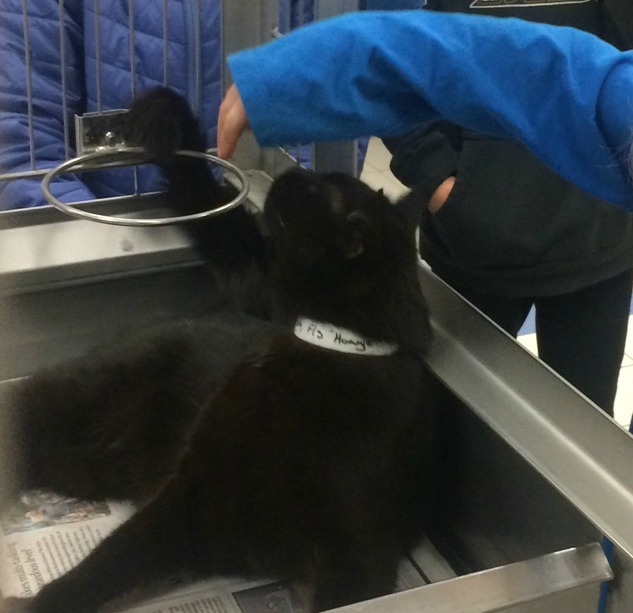
- We learned that 96% of pets who end up at the Animal Humane Society get placed. They are welcome to stay as long as it takes to find their forever homes, but most find a home within the first week of being on the adoption floor. This means there will probably be different animals to read to at each visit.
- This program is on the expensive side. It costs $15 to train and $10 for each one-hour reading session. I would approach this as a way to donate to the Humane Society rather than comparing it to free animal-reading events at the libraries.
- This is not really a “family-friendly” activity as much as a “parent-child” activity. Training sessions have to be a 1:1 child adult ratio. Reading sessions can be a 2:1 child adult ratio if both children have trained, but other siblings are not welcome and parents must be in eye sight of their Rescue Readers at all times. My husband did bring our other kids to view the animals on the adoption floor while we were finishing up our reading time, but, again, they were part of that general chaos that made reading difficult during open hours.
To sign up for Rescue Readers, choose an orientation date and register here for the program.
Free Alternatives at Libraries
- Children between the ages of 5 and 10 can visit Dakota County Library Branches on select Saturday mornings to read to a certified therapy dog. Find upcoming Dakota County Waggin’ Tales dates here.
- Scott County Library branches also offer Waggin’ Tales events, both on Saturdays and weekday evenings. Find Scott County dates here.
- Carver County Library offers Tails for Reading. Search keyword “Tails” on their event listings.
- St. Paul Libraries offer Paw Pals.
Family Fun Twin Cities was provided with a free orientation class to facilitate this review. Opinions are all my own. I’ve included some of the studies on the benefits of kids reading to animals below.
This article was originally published October 15, 2018.
Studies:
- Hall SS, Gee NR, Mills DS. Children Reading to Dogs: A Systematic Review of the Literature. Pavlova MA, ed. PLoS ONE. 2016;11(2):e0149759. doi:10.1371/journal.pone.0149759.
- Lenihan D, McCobb E, Diurba A, Linder D, Freeman L. Measuring the Effects of Reading Assistance Dogs on Reading Ability and Attitudes in Elementary Schoolchildren. Journal of research in childhood education : JRCE / Association for Childhood Education International. 2016;30(2):252-259. doi:10.1080/02568543.2016.1143896.
- Linder, D.E., Mueller, M.K., Gibbs, D.M. et al. Effects of an Animal-Assisted Intervention on Reading Skills and Attitudes in Second Grade Students. Early Childhood Educ J (2018) 46: 323. https://doi.org/10.1007/s10643-017-0862-
- Rainer Wohlfarth1,2, Bettina Mutschler2, Andrea Beetz3, & Karin Schleider. An investigation into the efficacy of therapy dogs on reading performance in 6-7 year old children. Available from: https://www.researchgate.net/publication/305992296_An_investigation_into_the_efficacy_of_therapy_dogs_on_ reading_performance_in_6-7_year_old_children [accessed Oct 15 2018].

